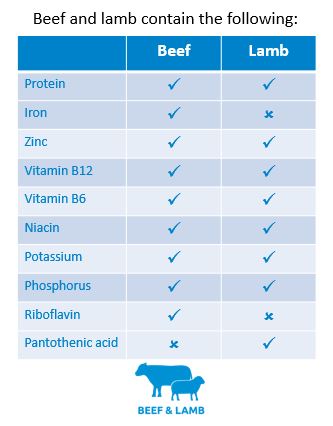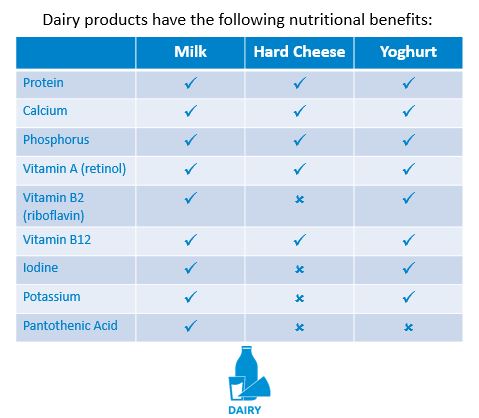Do we think about our health when we choose our food?
Saturday, 2 December 2017
Greater focus on the health benefits of beef, lamb and dairy could drive consumers to buy more, according to our research.
Consumer research conducted in August 2017 investigated reactions to specific health claims related to beef, lamb and dairy products. Key findings include identification of a general interest in following a healthier diet among the younger ages and that there are differences in what healthiness means to different age groups.
What does health mean to consumers?
Health has different levels of importance to people and is associated with many different meanings. This research project found that, when thinking about food, older people generally associate health with eating a balance of foods and restricting fat consumption, whereas younger people understood it to be the result of balancing a combination of different lifestyle factors such as exercise levels and food preparation methods. People aged 18̶̶̶–44 had a greater awareness of specific vitamins and minerals which constitute a healthy diet than those aged over 44. The words ‘natural’, ‘organic’ and ‘fresh’ were thought of as being healthy.
Find out more about the growing importance of health in our Consumer Focus on Health report
Current awareness of dairy, beef and lamb products
Consumers were aware of multiple negative associations for red meat and, although many had heard about beef and lamb in the news, they could generally only recall negative stories. Positive associations mentioned were that beef and lamb were strongly linked with protein and iron.
In order to understand the wider meat market, the same questions were asked about chicken and it was noted that consumers could not think of any negative aspects to the healthiness of chicken.
Dairy products were generally not considered to be unhealthy, although butter and cheese were recognised as high in fat. There was a suggestion among some consumers that dairy products were bad for their skin. At the time of the research, respondents were also unable to remember hearing anything in recent times about dairy in the media.
Attitudes to alternatives
Products which act as alternatives to traditional meat and dairy items are increasingly available. While this research was focused on understanding the opinions of people who currently purchase beef, lamb and dairy, we did ask whether they also bought alternative products (anything they may substitute for meat or dairy) and, if so, why, as it is important to understand trends within the whole market.
Whereas for meat items, a persuasive factor for choosing alternatives is the lower cost than traditional meat products, for dairy there was a suggestion that people were happy to try alternative products despite higher costs because the alternatives were believed to be ‘healthier’. However, when asked, they were not sure why this might be. This suggests there is a discrepancy between what consumers believe and their understanding of the reasons behind it, emphasising the need for clearer communication about food and health.
Creating an effective message
Messages based around the presence of specific vitamins and minerals and the health benefits they provide were tested to ascertain consumer reaction. As previously mentioned, there was already a high level of awareness of the protein and iron content of beef and lamb, however, consumers were interested to learn that they contained several different vitamins and minerals, this was not common knowledge.

People want to know how to gain the health benefit
Knowing how much of something should be eaten to gain a health benefit is something people would like to know and be guided on.
A source of protein is appealing, people are familiar with the benefits it provides, although some of the more health conscious respondents felt it could be gained from eating multiple other products, too.
The research suggests that messages which include a combination of the fact, the benefit of the claim and the reason to believe would be most effective. There was a suggestion that people wish to be advised on health by organisations which are passionate about nutrition and health rather than by companies with financial interests.
Many consumers claimed they would be likely to increase their consumption of beef, lamb and dairy following exposure to the health messages they saw, but this is higher among those who already buy the products. This indicates that positive health messages could be a good way of promoting these products and convincing people to buy into these categories.

Using what we know now
Evaluating the findings from both the quantitative and qualitative research has provided AHDB with a clearer view of which messages are best placed to promote the health benefits of beef, lamb and dairy products. This is already being used to inform decisions around AHDB’s marketing activity.
Read more about our Dairy Campaign Read more about our Beef and Lamb Marketing
Nutrition, diet and health are themes that underpin much of AHDB’s activity. As such, AHDB recognised that healthy eating and the dissemination of relevant research findings and health messages throughout the food supply chain are vital to build trust in sector products and support growth of these markets.
This research has highlighted that we should continue to educate people about the health benefits of primary food products. Although we are aware that health is not the top consideration people think about when choosing their food, we should all have sufficient knowledge to be able to make informed decisions.
AHDB commissions bespoke market research projects to provide evidence of consumer opinion on topics relevant to our sectors, to better inform AHDB’s marketing activity.



